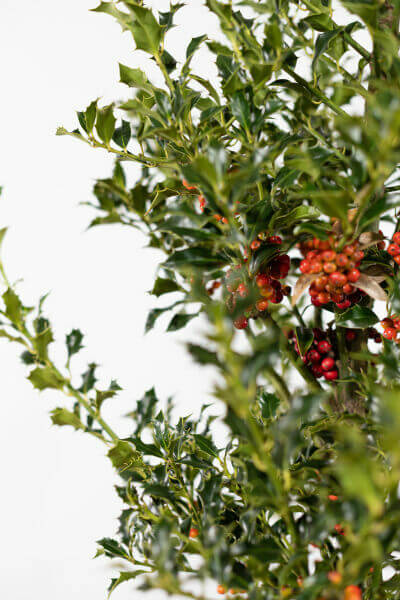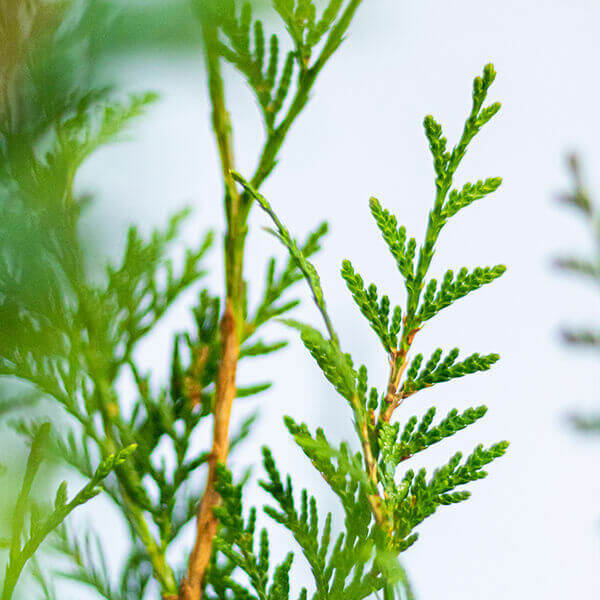Hedge Plants For Creating Boundaries
Hedge Plants For Creating Boundaries
Blog Article
Hedge Plants For Noise Buffering
Enhance your garden's allure with lush hedge ranges such as Yew (Taxus), Thuja, Laurel, Photinia, and Bamboo, celebrated for their structural stability and environmental advantages.
Yew and Thuja provide evergreen protection and winter season durability, while Laurel uses fast development and broad, fragrant leaves.
Photinia includes seasonal appeal with its lively red foliage, and Bamboo lends a low-maintenance, tranquil ambiance.
These hedges enhance air quality, reduce noise, and develop tranquil, private areas.
Correct planting, spacing, and maintenance guarantee energetic growth and environmental consistency.
Explore how these lush ranges can raise your garden's beauty and wellness.
Key Takeaways
Change Your Garden With Lush Hedge Ranges
- Select Yew for its thick, evergreen growth and unrivaled durability.
- Go with Laurel for its fast growth and broad leaves, guaranteeing quick personal privacy.
- Pick Photinia for its lively seasonal foliage, which turns a striking dark red.
- Make use of Bamboo for a low-maintenance, winter-hardy hedge with aesthetic appeal.
- Space plants 2-3 per meter and prune regularly for optimal growth and health.
Popular Hedge Plants
When transforming a garden with rich hedge varieties, it's necessary to consider popular hedge plants such as Yew, Thuja, Laurel, and Photinia due to their special attributes and advantages.
Yew (Taxus) is highly esteemed for its longevity and dense, green development, making it a prime option for sustaining landscapes.
Thuja is kept in mind for its evergreen foliage and robust winter season strength.
Photinia includes seasonal vibrancy with red leaves that darken gradually, developing dynamic visual appeal.
Laurel provides quick growth and fragrant, broad leaves, ideal for quick personal privacy.
In Addition, Bamboo is an outstanding option for atmosphere, providing a low-maintenance, winter-hardy choice that enhances the garden's visual with its classy, swaying walking canes.
These selections accommodate a variety of horticultural requirements and choices.
Benefits of Garden Hedges
Garden hedges use a plethora of advantages, making them a valuable addition to any landscape. These natural barriers are cost-efficient to execute and supply significant wind defense, improving air circulation and adding to noise decrease. The dense foliage of hedges like Thuja and Beech ensures privacy by blocking exposure, creating a remote and serene environment.
Hedges also play a crucial function in microclimate guideline, supplying a stable environment that cultivates plant growth and lessens temperature level fluctuations. Their detailed leaf structures filter pollutants, improving air quality and adding to a healthier garden ecosystem.
Furthermore, hedges stand out in noise decrease, soaking up and deflecting sound waves to lower ambient noise levels. This dual performance of supplying both acoustic and visual personal privacy enhances the general harmony and visual appeal of any garden.
Planting and Maintenance Tips
For a successful hedge, precise preparation of the planting area is important. Make sure the soil has correct pH and drainage to support strong root development.
Space the plants properly for the picked types. Water the hedge regularly during its initial growth phase, adjusting as needed with seasonal modifications.
Execute a organized bug control and illness avoidance method, utilizing chemical or natural treatments when essential. Frequently check for aphids, mites, and fungal infections.
Apply mulch to retain moisture and reduce weeds. Seasonal pruning promotes thick development and air flow, vital for plant health.
Following these standards will help you cultivate a dynamic, well-kept hedge that enhances the charm of your garden.
Spacing and Cutting Guidelines
Spacing and Trimming Standards
Proper spacing and cutting are crucial for cultivating healthy, aesthetically appealing hedges. Appropriate spacing guarantees each plant receives sufficient nutrients, light, and air flow.
Follow these guidelines for optimal hedge maintenance:
- Spacing: Position hedge plants 2-3 plants per meter to motivate robust growth.
- Pruning Methods: Regular pruning is vital for preserving preferred hedge height and shape. Trim brand-new growth in summer and cut down older wood during winter season.
- Seasonal Care: Adjust cutting schedules and approaches according to seasonal requirements to make sure plant health.
- Hedge Height: Routinely display and trim to keep the desired hedge height and attain uniform aesthetics.
Following these actions will ensure your hedge grows, improving both the appeal and performance of your garden.
Choosing the Right Hedge
Selecting the Right Hedge
Picking the appropriate hedge includes examining factors such as mature height, foliage density, and ecological resilience. Successful hedge plant choice needs understanding each species' development attributes and site-specific adaptability.
For example, Yew (Taxus) provides exceptional durability and thick growth, while Thuja is notable for its winter durability. In addition, thinking about maintenance requirements is essential; fast-growing species like Laurel or Privet need routine cutting, whereas low-maintenance alternatives like Bamboo or Ivy may be preferable for those seeking very little maintenance.
Ecological aspects such as soil type, light schedule, and moisture conditions ought to also guide the selection process. This cautious method makes sure the selected hedges will grow, supplying both aesthetic and functional advantages to the garden landscape.
Shipment and Planting Suggestions
To guarantee your hedge plants prosper, they must be delivered by specialized couriers and planted promptly upon arrival.
Follow these essential actions for effective planting:
- Soil Preparation: Enhance the soil with organic matter to enhance drain and nutrient content.
- Planting Depth: Create a trench two times the width and equal to the depth of the root ball.
- Watering Techniques: Water completely after planting, keeping the soil consistently damp however not saturated.
- Mulching: Apply a layer of mulch to maintain moisture and reduce weeds.
Consumer Support and Service
Given the vital role of prompt support in horticultural pursuits, our customer assistance team is offered six days a week through telephone, e-mail, and social networks to offer skilled recommendations and swiftly resolve any concerns. Their devotion to quick response times guarantees customer fulfillment by dealing with queries connected to plant health, ideal planting methods, and upkeep schedules.

Availability
----------------------
Within 24 hours
Email
Social Media
This comprehensive assistance system, strengthened by a stellar 9.3/ 10 consumer score, highlights our commitment to boosting the gardening experience for each client.
Often Asked Questions
For How Long Does It Take for Hedge Plants to Develop?
Hedge plants generally need one to three years to end up being totally established, with the specific duration differing by species and growing conditions.
Reliable care during this vital duration is important for robust development. Consistent watering, Browse this site watchful weed control, and proper fertilizer application are pivotal in promoting strong root advancement.
For instance, fast-growing species like Laurel may develop more rapidly, while slower-growing varieties such as Yew might take longer. Thorough upkeep accelerates the establishment procedure, leading to healthy and dense hedges.
What Are the very best Hedge Plants for Personal Privacy?
The concern of the best hedge plants for privacy involves examining evergreen and deciduous choices.
Evergreen hedges like Thuja, Laurel, and Cypress supply year-round coverage, ensuring continuous privacy.
On the other hand, deciduous hedges such as Beech use seasonal personal privacy, shedding leaves in colder months.
Key maintenance suggestions for privacy hedges include regular trimming, fertilizing in spring, and appropriate spacing-- usually 2 to 3 plants per meter.
In addition, constant watering and thorough weed elimination are important for promoting healthy, thick development.
Can Hedge Plants Draw In Wildlife to My Garden?
Yes, hedge plants can draw in wildlife to your garden by offering vital benefits like shelter, food, and nesting sites, thus enhancing local biodiversity. Yew, holly, and laurel are outstanding for drawing in birds, while ivy supports a variety of insects.
Nevertheless, it is essential to note that there are some drawbacks, such as increased maintenance to manage pests and regular maintenance. Carefully selecting and keeping hedge ranges can help stabilize these advantages and drawbacks, ultimately cultivating a sustainable and vibrant environment in your garden.
Are There Any Flowering Hedge Plants Available?
Yes, there are flowering hedge plants offered that can enhance the appeal of your garden.
For example, Elaeagnus, likewise referred to as Olive Willow, produces aromatic white flowers in the fall, adding a touch of sophistication.
Photinia, another popular choice, showcases lively red leaves that develop into an abundant green, creating a vibrant visual effect throughout the seasons.
To make sure these plants thrive, it's vital to practice proper pruning methods and seasonal upkeep, such as trimming brand-new development in the summertime and cutting down in the winter.
These steps will assist maintain the health and visual appeal of your blooming hedges.
How Do I Prevent Pests in My Hedge Plants?
To avoid bugs in hedge plants, employ natural insect control techniques and keep proper hedge care. Introduce helpful insects like ladybugs, which take advantage of harmful insects, to develop a well balanced ecosystem.
Routinely check your hedges for indications of problem and quickly eliminate any afflicted parts to avoid the spread. Make sure the health of your hedges by using well balanced fertilizers and supplying appropriate water.
Utilize mulching to retain soil moisture and proper spacing to reduce plant stress and promote robust growth. These practices collectively help in minimizing pest issues and maintaining a healthy hedge.
Conclusion
In essence, choosing the ideal hedge ranges such as Yew, Thuja, and Laurel can change any garden into a relaxing sanctuary. These plants offer year-round greenery, enhance visual appeal, and deal useful benefits like noise decrease and wind defense.
Appropriate planting methods, accurate spacing, constant watering, and seasonal cutting are important for ideal growth.
Reputable delivery services and skilled consumer support ensure a smooth experience from purchase to planting, making it simpler than ever to elevate your outside space.
Garden hedges use a plethora of benefits, making them a valuable addition to any landscape. These natural barriers are cost-efficient to carry out and supply considerable wind defense, boosting air circulation and contributing to noise reduction. The dense foliage of hedges like Thuja and Beech ensures privacy by obstructing exposure, producing a peaceful and secluded environment.

Pruning Strategies: Routine pruning is necessary for keeping preferred hedge height and shape. Trim brand-new development in summer and cut back older wood throughout winter.
Report this page